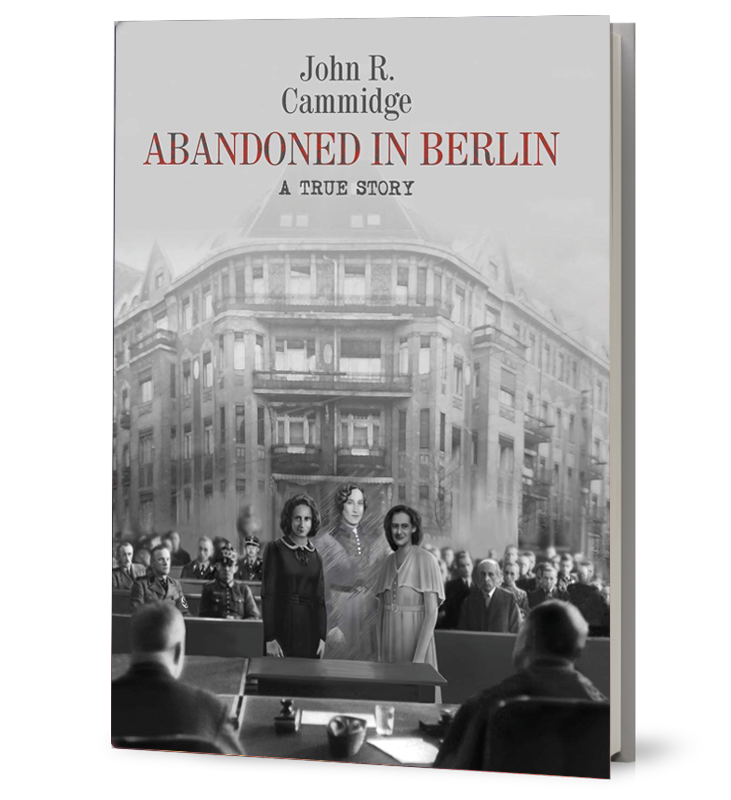
Abandoned in Berlin: An Historical Mystery Story:
Abandoned in Berlin, invites readers to decide if anti-Semitism ceased at the end of the Second World War or was continued by new West German laws that allowed the country to shrug off the need for restoration.
Buy the Book at the Following Retailers
To order Abandoned in Berlin, please visit any of the sites below:
UK VENDORS

Imagine taking a Rick Steves walking tour in Berlin in June 2016 with Hilda, a friend who wants to discover the enormous block of apartments that her deceased mother and family once owned. It had been forfeited to the Nazis about the time of the 1936 Berlin Olympics. A few years before the Olympics, at the age of 11, Hilda’s mother inherited three-eighths of the building due to the death of her father. As a result, in late 1933, a short time after Hitler came to power, she was placed under the supervision of a Nazi Guardianship Court because she was under 21 and owned substantial assets. Her mother could not be her guardian because of German law and the building fell under the control of the Court.
The property is located in the Wilmersdorf district of Berlin, featuring four stories of apartments and shops on the ground floor. It had escaped the worst of the Berlin bombing, and after the war, it came under the jurisdiction of the British.
None of the apartment occupants Hilda spoke to admitted to knowing that a Jewish family had once owned the building. Her maternal family had left for Austria after the sale, where her mother married a Viennese Jewish journalist, her grandmother died, and both parents escaped to Shanghai in 1941, where they lived for the remainder of the War. This Hilda knew from a videotape that her mother had made in the early 1990s, but that was all. No mention was made of how the block of apartments was lost, and Hilda was determined to find out.
The story describes Hilda’s efforts to discover what happened during the Nazi era and why the building was not returned to her family after the War. The results were unexpected and shocking.
Initially, there was help from the local Land Register in the Amtsgericht (civil court), followed by unexpected support from the Berlin Archives Office, and finally, a box of papers her mother had left behind in the garage when she passed away. Slowly, the jigsaw of aggression, collusion, threats, escape and denial began to take shape. For some members of the family, their lives ended in the Holocaust; for Hilda’s immediate household, however, because the Nazis took away the family’s livelihood before the War began, her mother survived, and Hilda received the gift of life.
The book may be published, but the story is possibly not complete. Hilda has been unable to trace the von Bonin family that took ownership of the apartment blocks in 1936. Captain Hugo von Bonin of Berlin W.35, Hansemannstrasse 13, assumed ownership in March 1936 and defended the legality of his purchase after the war. Irmard von Bonin became heiress of the property in 1975, and from 1981 to 1990 her heirs collectively owned the property. The businessman Karl Burkhard Meier bought the building in 1990 and sold it to the company Onnasch Baubetreuung GmbH & Co. two years later. Efforts to contact Mr Onnasch have so far failed. It is understood that the firm may have, by now, sold the apartments to individual owners. So far, there is no public recognition that a Jewish family once owned the building and that an 11-year-old girl, who inherited three-eighths of the building in 1930, was dispossessed of all property rights by a Nazi Guardianship Court.
To Receive Access to the First 5 Chapters of Abandoned in Berlin, Please Subscribe Below:

Download the 1st chapter below!
Dedicated to Herta, Vera, and Ellen
Ich werde dich nie vergessen
(I’ll never forget you)








